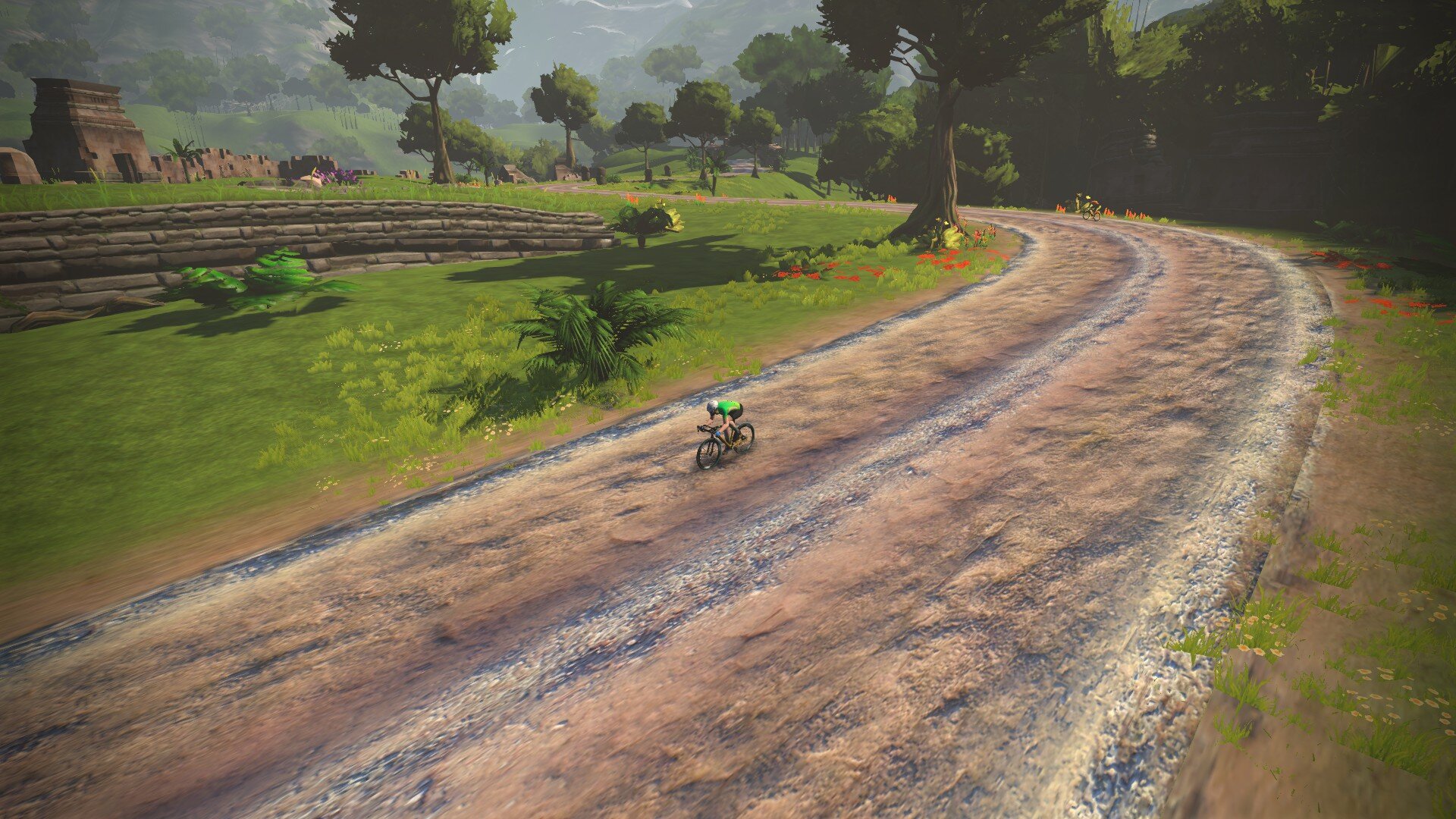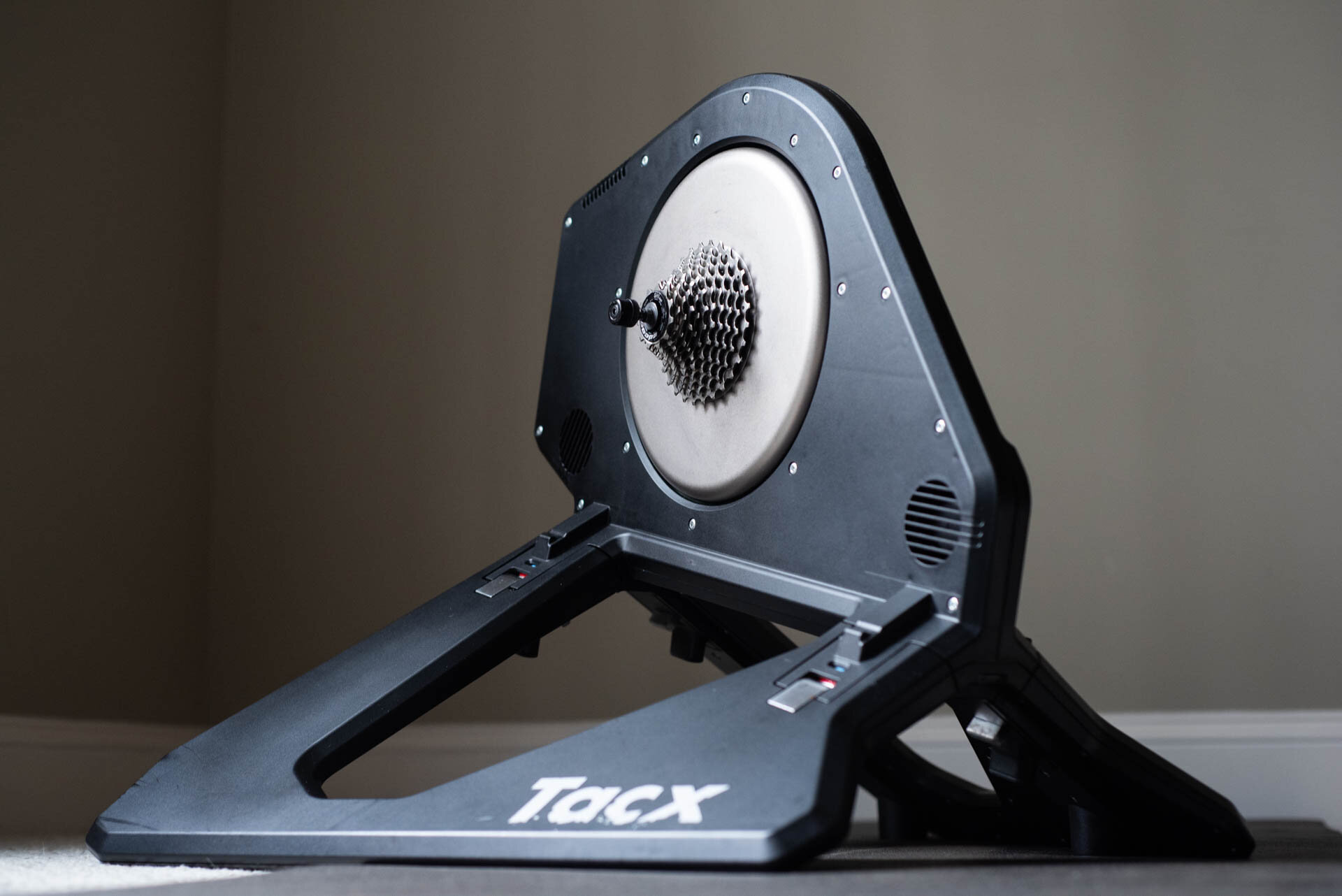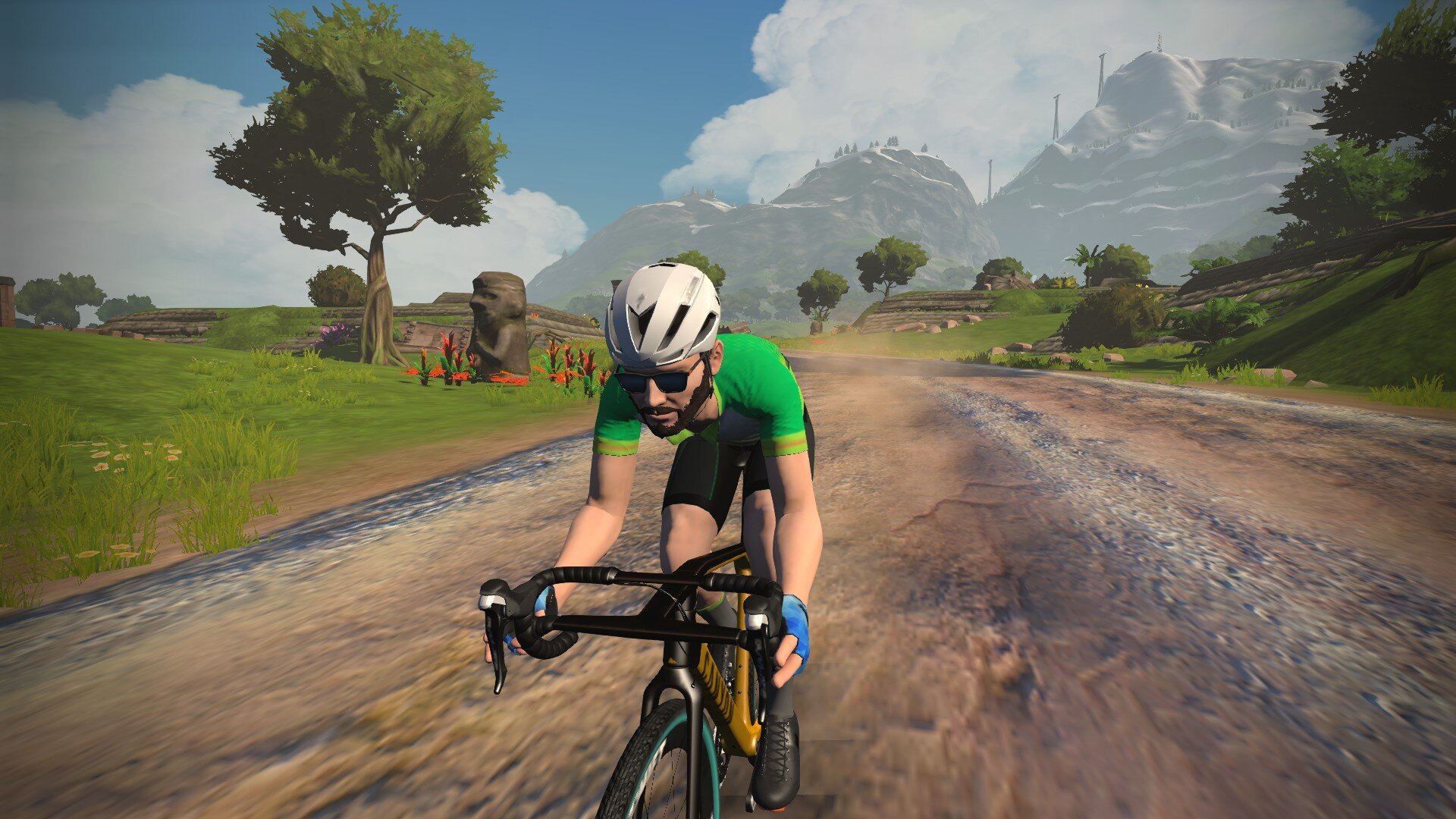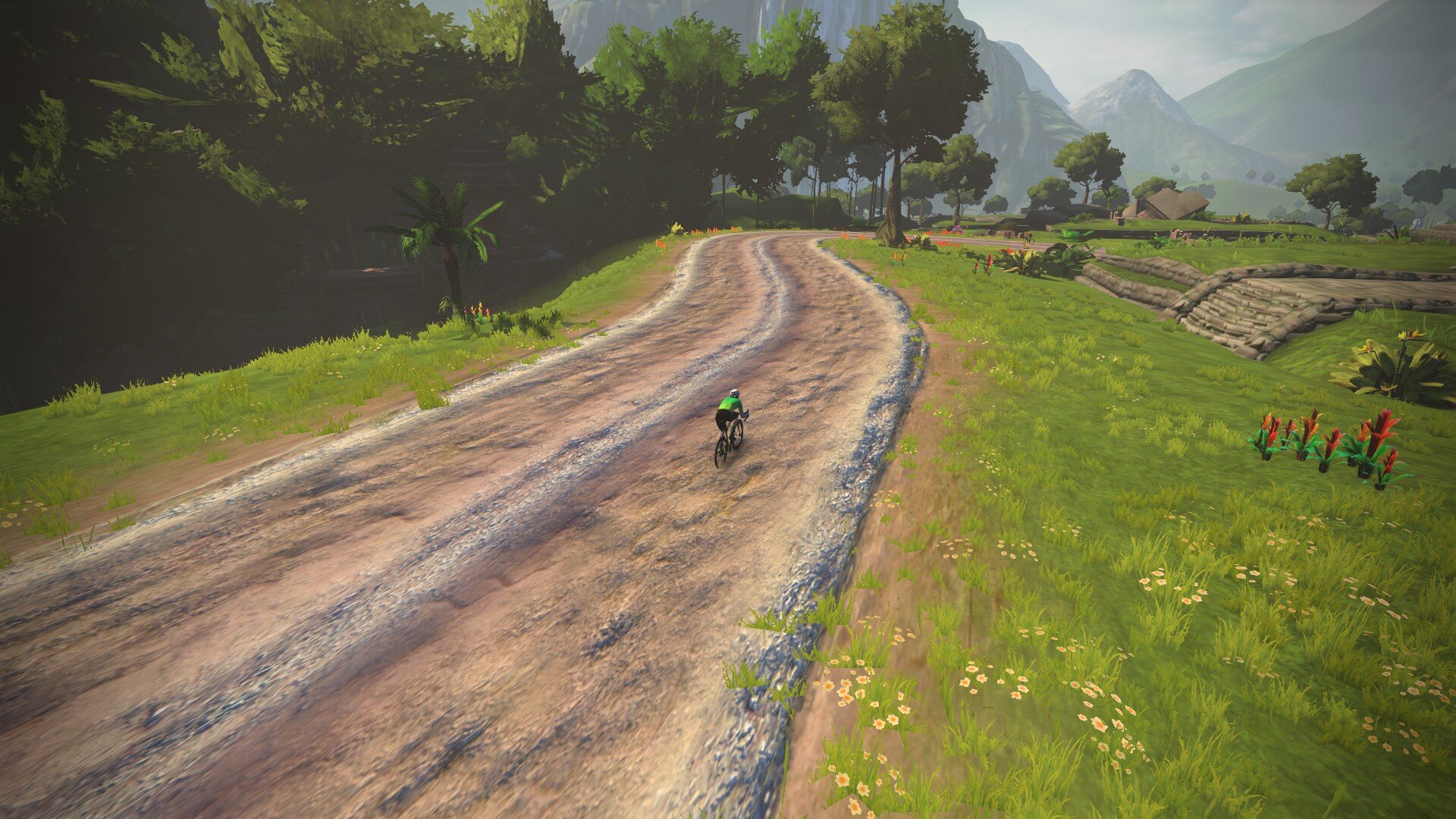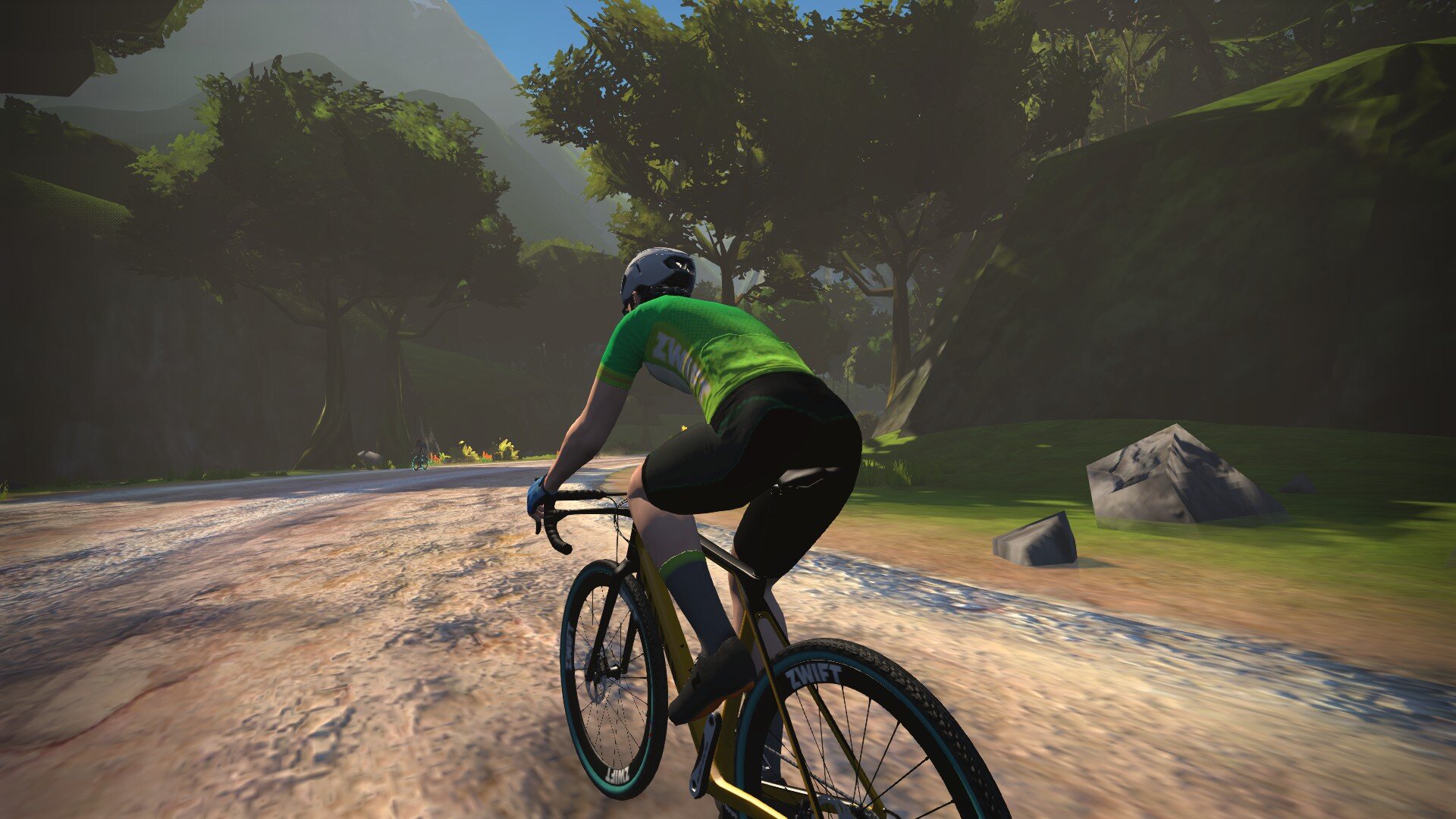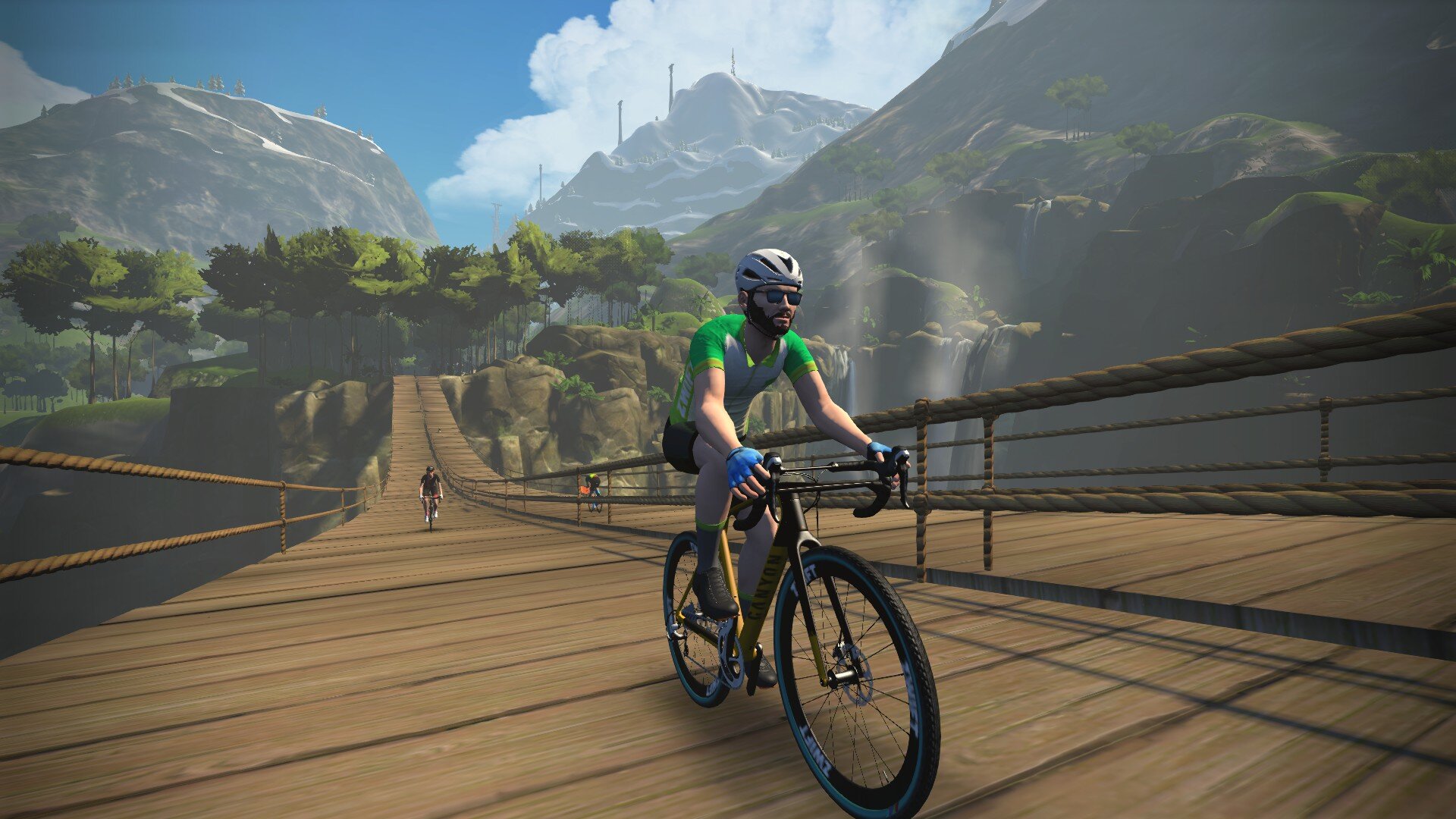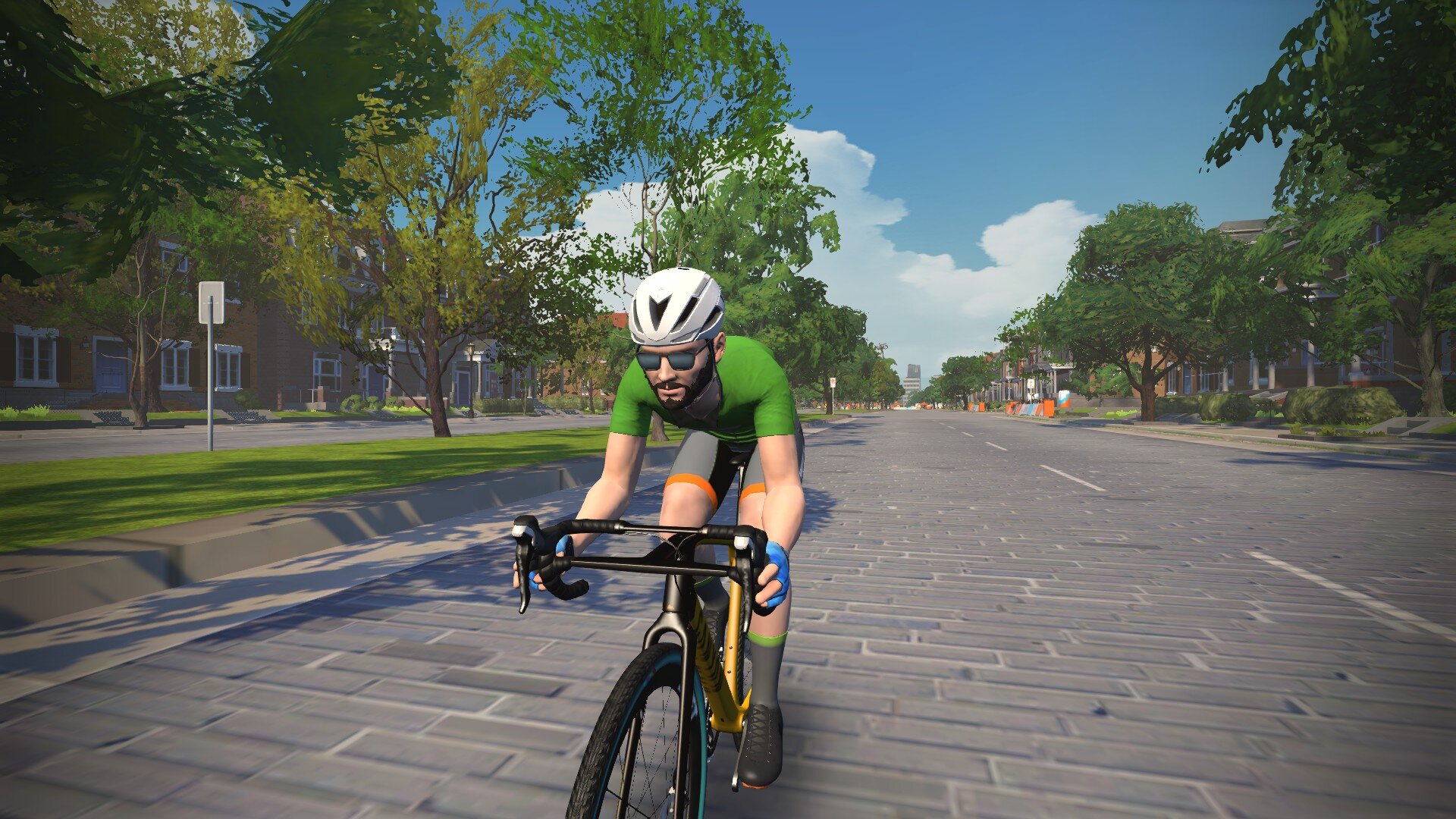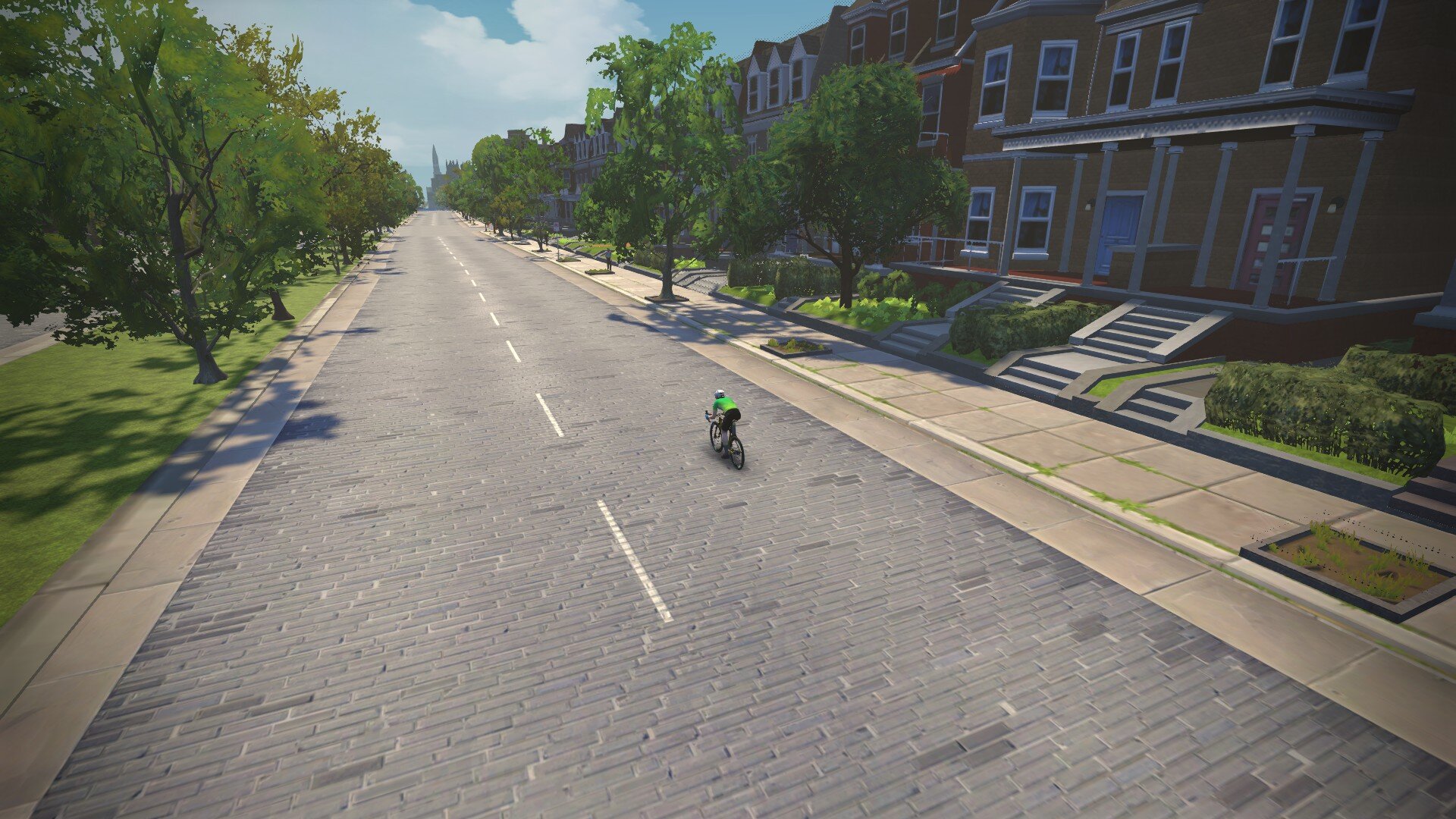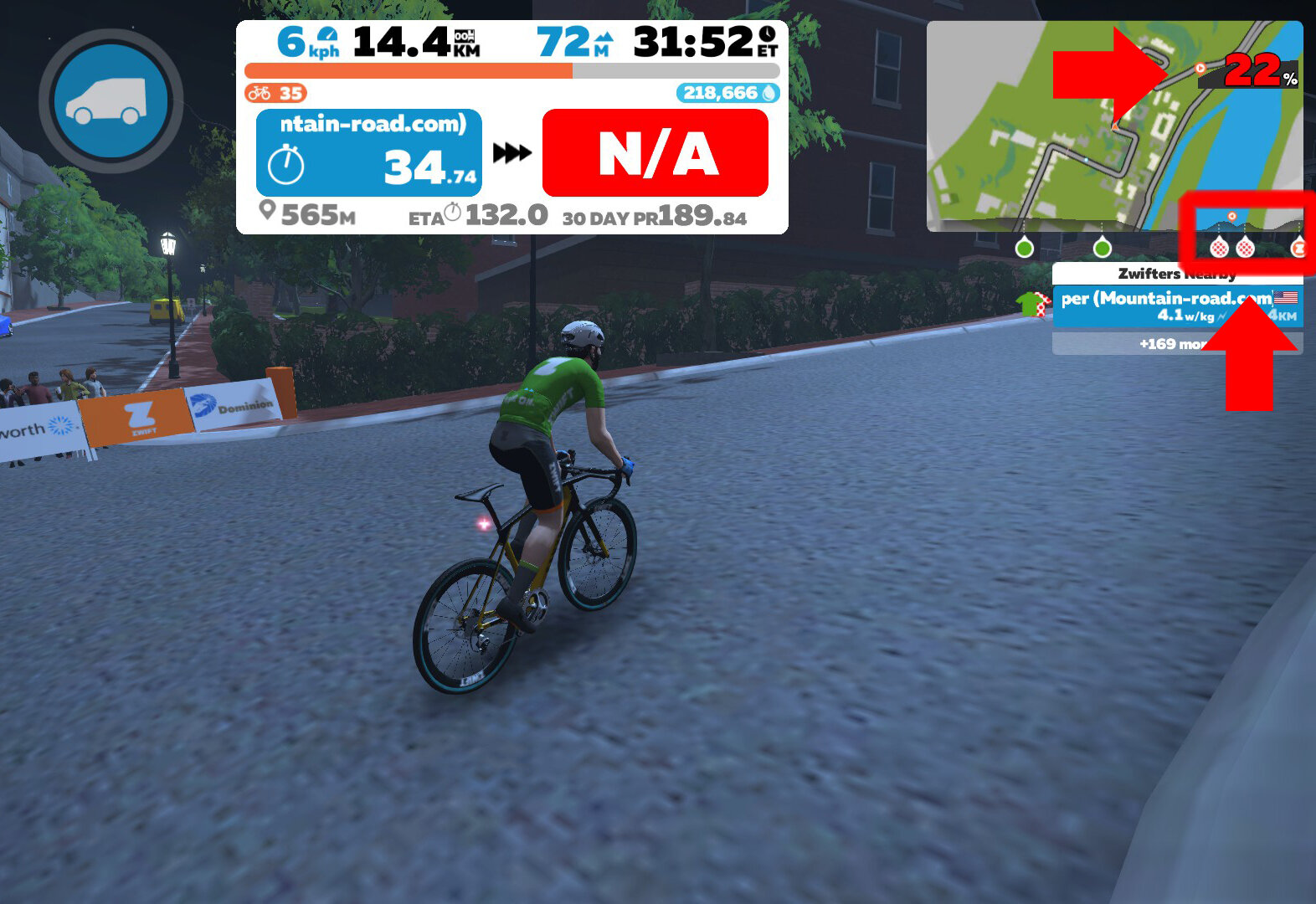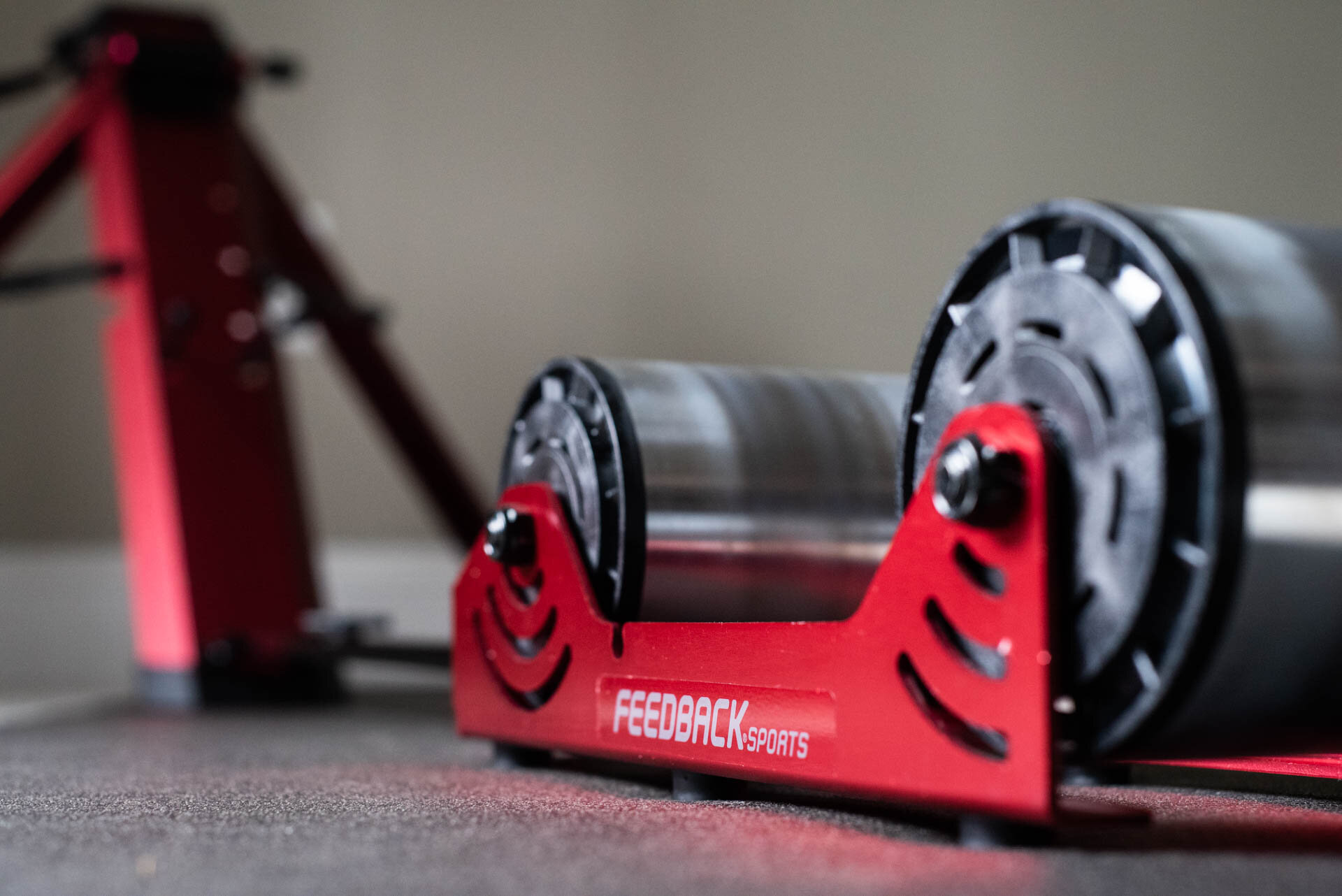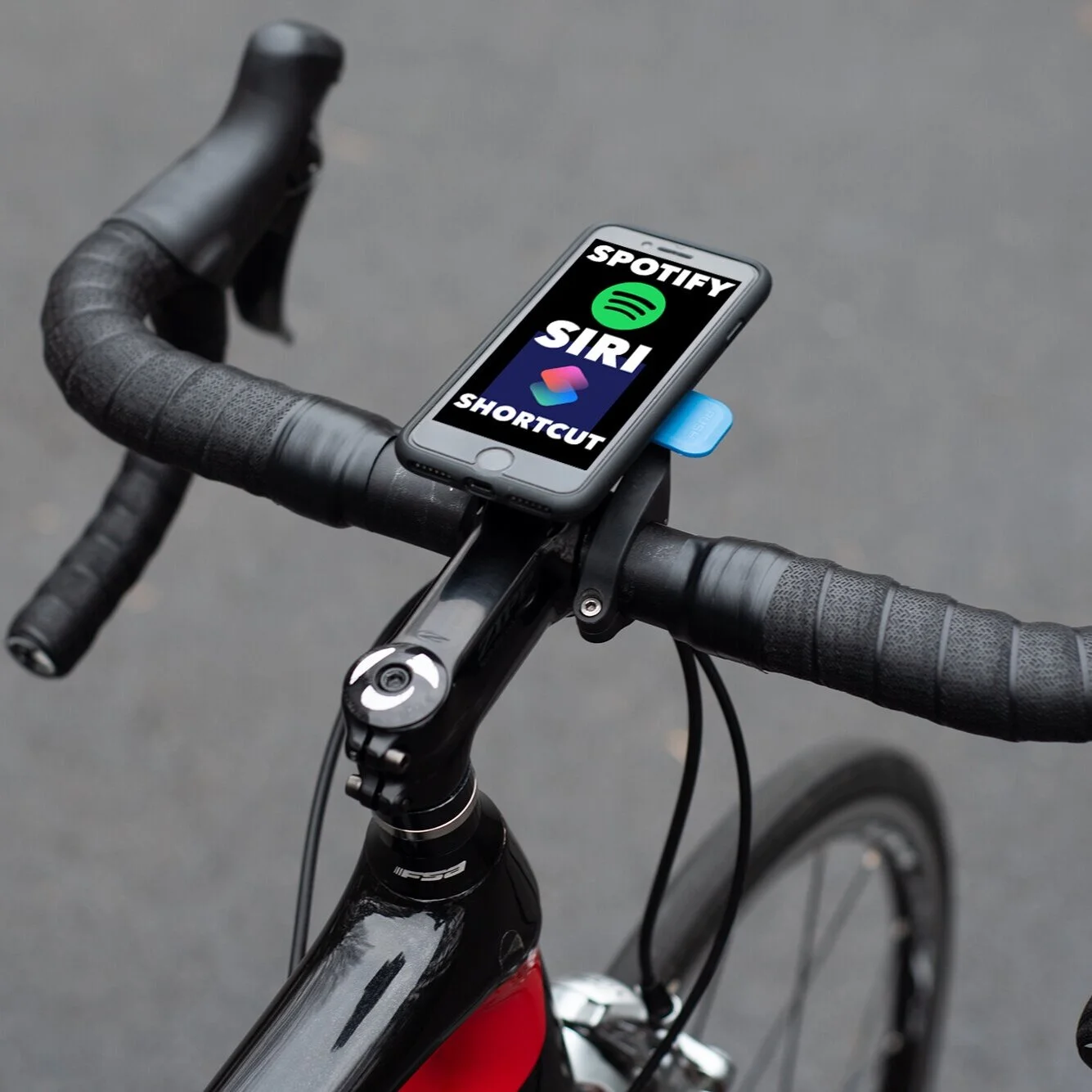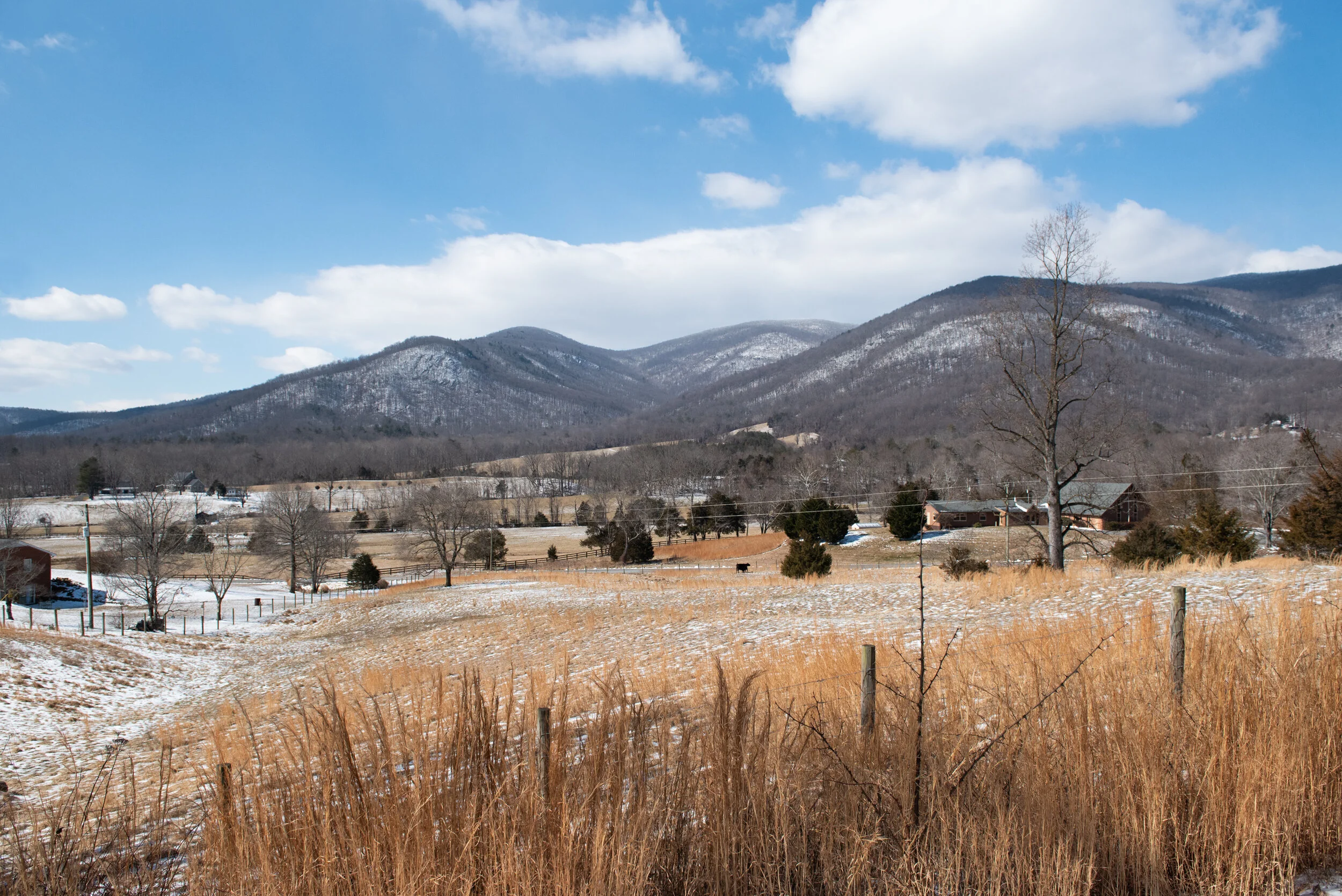3 Ways to Simulate Gravel Riding Indoors (…kind of)
Disclaimer: This post contains affiliate links, through which we earn a commission.
Warmer temperature and longer days are slowly making their way back into the Northern Hemisphere. Soon cyclists will be able to comfortably ride outdoors again. Here in Northern Virginia, with an unusually low amount of snowfall this season, I’ve been able to maintain regular outdoor rides throughout the winter. I won’t complain about that for one minute! We did however get our fair share of icy-cold days. Colder temperatures should however not be a reason to hide away indoors, and many a gritty gravel rider has proven that a few correct clothing layers can get you through the most extreme winter temperatures. See some of the highlights that we captured at the Shimano Frostbite Gravel Series for a good example of how riders opted to enjoy a good ride no matter the weather. I think my 4th grade English teacher tried to teach me something about cycling when I learned this poem: “Whether the weather is hot or whether the weather is cold, whatever the weather, we’ll weather the weather, whether we like it or not.”
As much as one can push through cold winter days, there will be those weather conditions that just require a surrender to the indoors. Indoor riding has certainly changed the game for how to best prepare for your next cycling-related goal. In this post, we will look at some indoor riding options that allow gravel riders to continue training, even if they can’t get outdoors. I am a big fan of Zwift as an indoor training platform, but there are certainly many other options available, such as Trainer Road, Suffer Fest and RGT. And while road cycling was central to its beginnings, Zwift has responded to the increasingly popular gravel movement by adding off-road features.
Jumping onboard the growing gravel cycling movement, Zwift recently introduced updated rolling resistance over gravel sections. The update now better replicates the effect that gravel surfaces have on the speed of riders when going over such sections. If you have taken a recent spin through the Jungle Circuit on Zwift, then you know that a regular road bike is no longer the best choice, and that one of the gravel bikes (Zwift gravel, Canyon Inflite, Cervelo Aspero or Canyon Grail) or mountain bikes (Zwift MTB, Scott Spark RC, Canyon Lux or Specialized S-Works Epic) are now much better suited to race over the gravel sections. In fact, if you look carefully at the rolling resistance numbers (crr) that are included in the linked article above, you’ll notice that the mountain bikes have a slightly lower number, making them faster over gravel surfaces than the gravel bikes. There are also rumors surfacing that we will soon see new expansions to the Zwift course that will primarily run over a gravel surface. You know that gravel is booming when even the indoor riding community gets to experience it!
What makes for a great gravel ride is the additional connection you feel with the bike when riding over bumpier, more rugged surfaces. It’s the additional physical experience that you feel with gravel that makes the ride more entertaining. That connection will always be missing when you bring an activity indoors that was designed for contact with solid ground. However, we can take a few interesting workarounds to make indoor gravel riding just a bit more realistic. I’m going to break it down between three options in the sections below.
1) Tacx Neo’s Road Feel
I’ve owned the Tacx Neo trainer for the last 4 years and have been incredibly happy with this smart indoor trainer. I bought the 1st generation model in 2016, but since then, Tacx has brought to market two more models in the form of the Tacx Neo 2 and shortly after, a slightly updated Neo 2T model. At the launch, this trainer was by far the leader in its class and we’ve only seen other manufacturers catch up to them in the last few years. The smart resistance control and super silent operation has set this trainer apart from the competition, especially in the early days of smart indoor trainers.
One key feature with this trainer is the ability to recreate the feeling you get when riding over different types of surfaces. This feature is called “Road Feel” and was first released through a firmware update back in July of 2016. To this day, none of the other manufacturers have followed suit with anything similar in their product implementation. Road Feel provides feedback from the trainer in the form of different types of vibrations that are sent through your chain as you pedal. This means that when you ride through Zwift’s virtual world you will feel a different sensation as you cross over pavement, brick, wooden bridges, cobblestone section, icy/snowy passes or dirt roads. It works really well! It’s truly incredible how the Tacx Neo can simulate the different road surfaces as well as it does. The wooden bridges feel like separate planks while cobblestone sections feel much chunkier with a rougher vibration, just like in the real world. For those who prefer a smooth ride, Road Feel can be switched on and off in the settings section while riding on Zwift with a Tacx Neo trainer.
By switching on Road Feel while riding through the Jungle Circuit route on Zwift, a rider will experience a realistic sensation of what a gravel section will feel like in real life. Not only do you get to zip around on gravel, but the Jungle Loop also includes a long hang bridge, as well as some wooden sections that make for an entertaining ride over various surfaces. The virtual workaround is a great way to simulate, as much as possible, riding on gravel while indoors.
I want to push this setup one step further and also highlight one other course on Zwift that works great to simulate a rugged off-road ride. While the Jungle Circuit and its gravel roads are fairly self explanatory, this next virtual world might surprise you a bit - Richmond! Indeed, this course does not contain a single stretch of gravel road, but with the road feel of the Tacx Neo, we can get creative and recreate an off-road feel in an interesting way.
Zwift’s Richmond course (“The Fan Flats” route to be specific) offers a long section of brick road, which provides the perfect virtual terrain to push the Neo’s Road Feel a bit further. The vibrations that you feel while riding over brick and cobblestone sections are much more intense when compared to the gravel road sections as found on the Jungle Course. If you want to get a better idea of how a rough gravel road feels, then a spin around the Richmond flat course with the Road Feel turned on is as good as it’s going to get indoors.
2) Any smart trainer that controls the gradient and resistance
There’s a second reason why I like the Richmond course to prep for a gravel ride. This reason does not relate to the Neo’s Road Feel, but rather to the ability to simulate certain gradients on the Richmond Course. During February 2020, Zwift released an update that refreshed the look of the Richmond Course, giving it a much more detailed level of graphics. Another addition that came with this update was the ability to ride the course in either direction, something that was not possible before. Towards the end of the “2015 UCI Worlds Course” you have always been able to ride over three short, but sharp hill climbs. Now, with the ability to ride the course in both directions, you can easily pedal out to the hills, ride all three hill repeats, make a u-turn and then ride the hills again in the opposite direction. Repeat as many times as you wish. By taking on the hills in the reverse direction, you’ll end up at Libby Hill, which includes a nasty 22% gradient. If you set your trainer difficulty setting to 100% and do a few rounds over all those hills and you’ll soon feel like you are somewhere on a hilly off-road course.
Off-road riding, such as mountain biking or gravel riding, often include short and steep sections of riding that force you to spin up hills in a light gear. There is a reason why it is called a gravel grinder after all. When doing multiple short and steep hill repeats on a course like Richmond, you can in some way simulate that type of off-road riding while indoors. As an added bonus, two of the sharp climbs on the Richmond Course are cobbled climbs, which means that with the Road Feel from the Tacx Neo, you have some pretty realistic climbs to add into your indoor gravel training.
3) Wheel-on rollers (Budget Option)
What if you don’t have or want an expensive indoor trainer that can simulate Road Feel and/or gradients? Well, this is where some creativity can go a long way. In this last option for simulating gravel, I want to explore a more affordable option for riding your gravel bike indoors.
There are numerous indoor trainers available on the market that follow the “wheel-on” design. Examples include the Kinetic Road Machine Smart 2, Saris Fluid 2 Trainer, Wahoo Kickr Snap, and Elite Tuo. These trainers allow you to simply take the full bike, including the back wheel, and clamp it into a trainer. In contrast, most high-end smart trainers require taking the rear wheel off and attaching the rest of the bike to the trainer. The wheel-on design can, however, work great as a budget option.
The advantage with gravel bikes is that they are (in general) fitted with fairly wide tires. The wider tires come in handy when riding on a trainer by adding some additional rolling resistance. Smooth tires will offer a lower rolling resistance, but more grippy tires that you find on most off-road bikes will provide some additional resistance. The added rolling resistance can really help to make the indoor ride feel closer to reality. Wider gravel tires also mean lower tire pressures. Having a softer tire beneath you while riding on the trainer will add a degree of bounce that should also feel much more natural as compared to the rigid smart indoor trainers that provide no give.
If you want to take the wheel-on approach one step further, you can also look at rollers. Rollers have the added fitness benefit that you will need to really practice your balance and develop a strong core to stay upright while onboard this setup. Gravel riding requires dialed in bike handling skills, which a roller can certainly help to improve. Warning! You might even get to practice how to best fall over as you try to get used to riding on rollers. Rollers come in a wide variety and will range from a simple roller like the Tacx Antares indoor retractable rollers to more advanced rollers like the ELITE Nero Interactive Rollers. For those who don’t want the added challenge… and potential hazard of full-on rollers, the Feedback Sports Omnium Portable Trainer is a great modified version of a free-floating roller. I’ve owned the Feedback Sports trainer for over a year and it provides that middle ground for experiencing the real-world rolling resistance from the rear wheel, while also getting some degree of floatation in the rear wheel, since its not attached to a trainer. This setup requires the front wheel to be removed and then the front fork attaches to the trainer. Added bonuses include progressive resistance and the ability to travel well, with compact fold-up features.
One last point that I will make about the wheel-on / budget option is that you can still very affordably connect this type of setup to Zwift, should you wish to do so. If you do not have a power crank or power pedals that can be used as a power source on Zwift, you can still make use of a simple speed/cadence sensor to move your avatar through the virtual world. We have used Feedback Sports Omnium Portable Trainer in combination with the Wahoo Fitness Blue SC Speed and Cadence Sensor to ride on Zwift. It might not be 100% accurate in terms of the power numbers that you will see on the screen, but it provides a great solution to get started with Zwift on a budget.
Wrap-up:
There you have it, three ways in which you can workout indoors and make it feel a little more like riding your gravel bike outdoors. I am in no way claiming that these options will be nearly as entertaining as the real thing, but every little bit helps. There simply is no replacement for the incredible feeling of riding outdoors where all your senses are completely awakened. No amount of artificial environment recreation will ever get us close. It’s pretty great to be able to have options for riding your bike on days when going outdoors is not an option.
I hope you enjoyed this breakdown of training options and that it helps you through the last part of winter and gets you set for the upcoming gravel racing season!
Check out the video for this blog post here!
- Wiehan
Tell us! Are there any other simulation tricks that we missed? If so, let us know in the comments below!

